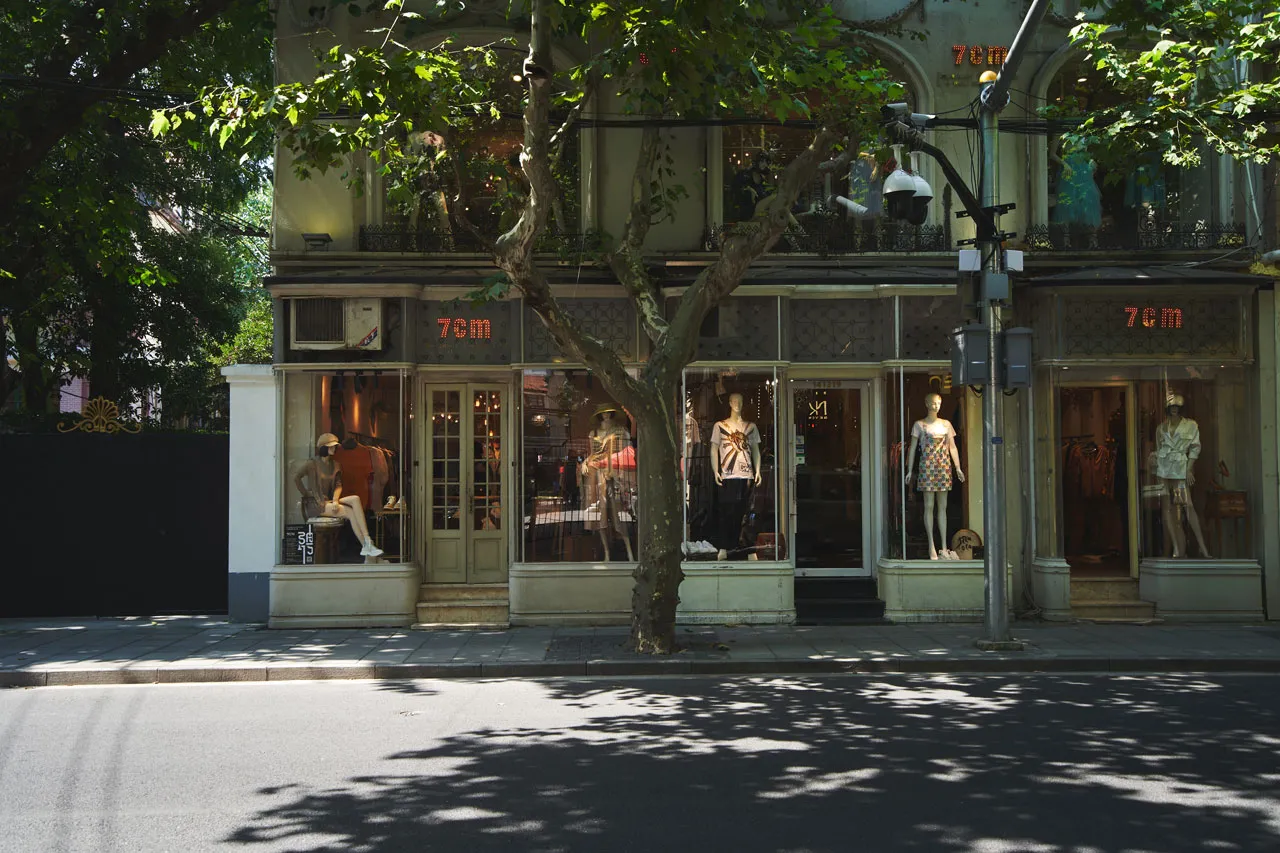China’s Gateway to the World
From the earliest years of the modern period, Shanghai has been China's glistening shop-window, or urban display-case, through which the world sold itself to China, and China sold itself to the world. This has made it a city peculiarly oriented to exhibition. By the beginning of the 20th century, it was the leading Chinese center for publishing, advertising, fashion, cinema, and modern architecture. Due to its peerless promotional excitement, the 2010 World Expo, held in Shanghai, seemed to tune into the city as no other event could.
Shanghai’s Iconic Shopping Streets
Commercial spectacle draws a crowd, which means visitors. There is an intrinsic connection between shops, street-life, and urban attraction. The urban throng wants to spend, and perhaps still more to browse. During Shanghai's high-modernist 'Golden Age' the magnetic core of this crowd-pulling power was situated at the intersection of Nanjing East Road 南京东路 and Tibet (or Xizang) Road 西藏路, where four great department stores represented one of the most dazzling retail environments to be found anywhere on earth. Visitors from throughout China, and beyond, still flock to this area today, although its lights have dimmed, if only comparatively. Nanjing East Road is once again lined with the flagship stores of the world's most prestigious fashion, jewelry, watch, and automobile brands. In the early decades of the 21st century, however, it is much harder to decide with confidence where the city's cutting-edge of commercial intensity is to be found.
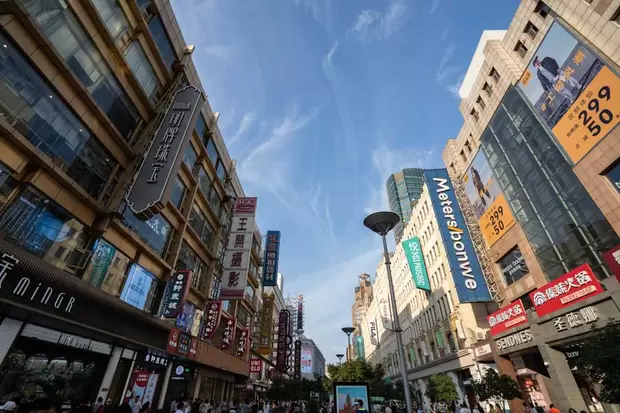
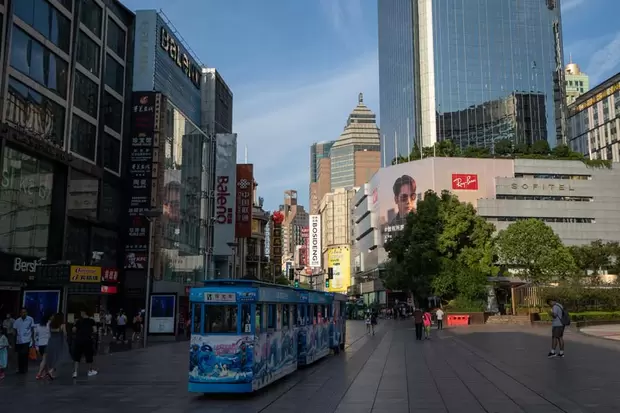
Nanjing Road E. Pedestrian Street 南京东路步行街
Many of Shanghai's most popular tourist destinations double as lifestyle and shopping spots. Xintiandi and the Old City are obvious examples. Another shopping destination worthy of mention is the Discover Shanghai Village, situated next to the new Shanghai Disneyland Resort, at the center of the Shanghai International Tourism and Resorts Zone. Discover Shanghai Village pays homage to the city's commercial "Golden Age" with its Art Deco style and jazz-infused cultural atmosphere. Its boutiques trade in major international fashion brands, often priced at a steep discount.
Local Markets and Street Shops
Shanghai seems always to have been saturated with shops. It was a commercial center long before it acquired its modern name. In the colonial period, Shanghai's importance as a trade hub was further intensified. The city's signature 'lane housing' (lilong 里弄or longtang 弄堂) architectural style was typically designed to accommodate commercial space on its outward-facing frontages. Those visiting the narrow laneways of the Old City today quickly capture a vivid impression of its traditional market density.
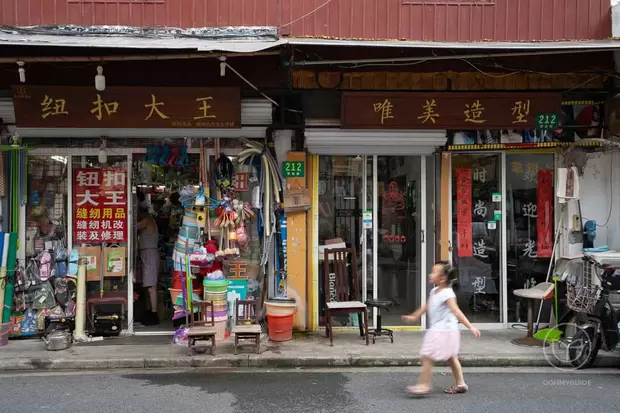
Groceries
Even among Shanghai's soaring modern towers, time-tested traditions persist. Wet markets are still considered an essential ingredient of the Shanghai commercial cosmos. Specializing in fresh foodstuff sold from simple wooden tables – vegetables, fruit, fish, meat, eggs, tofu, pickles, and more – these retail spaces plug the contemporary metropolis directly into its agricultural hinterland, as they have done for centuries before. There were many more live things on sale in China than Westerners are generally used to. Prior to the SARS epidemic of 2002-2004 live poultry was a standard feature of the markets, but it has since been proscribed on public health grounds. The haggling skills, once indispensable to shoppers in the city's traditional markets, are ever less necessary, as negotiable prices steadily recede.
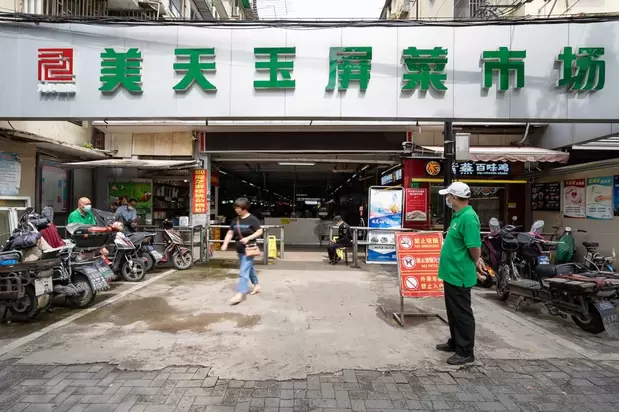
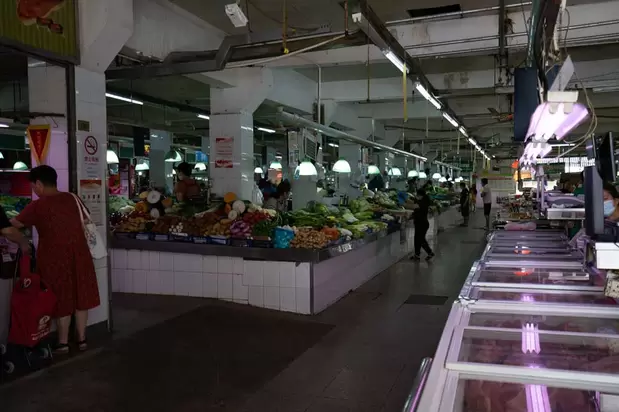
Wet market
Another important niche of the city's retail economy is filled by convenience store chains. 7-Eleven, FamilyMart, Lawsons are among the most successful. All follow a similar formula, with minor variations, stocking comparable product lines. The provision of hot snacks is a service staple greatly appreciated by patrons, to a degree that might surprise visitors from overseas.
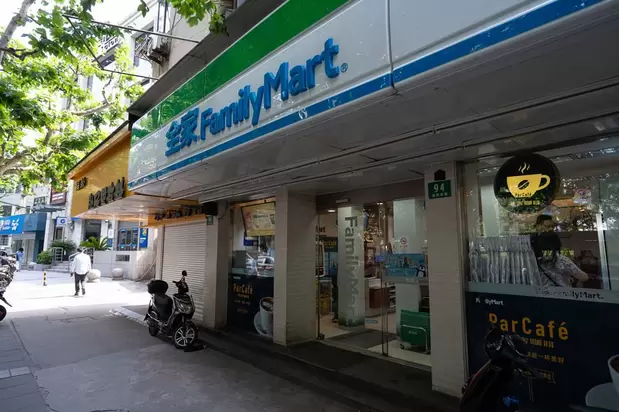
Convenience store
Scaling up from the convenience stores, in countless fine gradations, are the city's local supermarkets. While cultural differences in consumption patterns make their mark, of course, foreign visitors should not find these shops impossible to navigate. The relatively small range of products – and the larger range of brands – that are difficult to find in Shanghai's local supermarkets can be hunted down in those from overseas. Numerous major international retail chains have a presence in the city. Incomers such as Carrefour, Metro, Tesco, Sams, and Costco have partially localized, catering to Shanghai tastes, while also dedicating space to imported goods. Pricier alternatives, exemplified by City Shop, concentrate more exclusively upon overseas brands. Major international niche retailers, such as IKEA, have also slotted themselves successfully in the city.
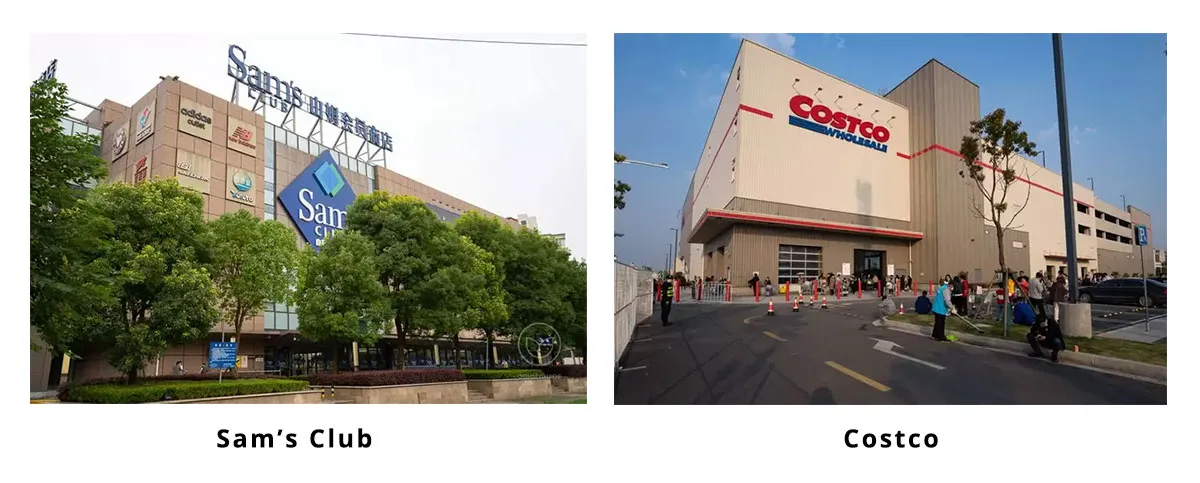
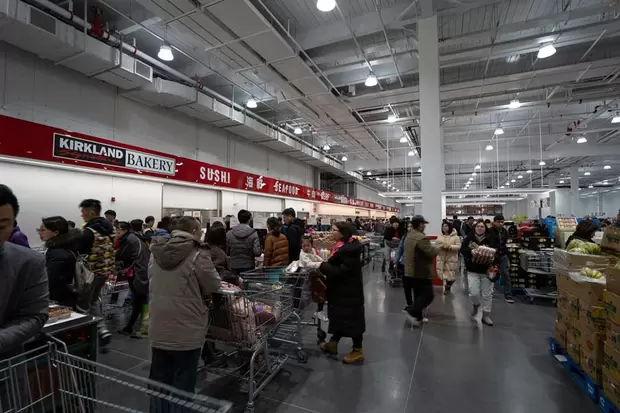
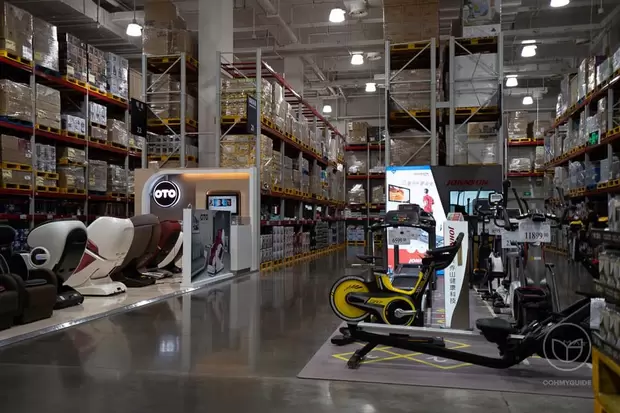
Shanghai’s Boutique Fashion Districts
While there is enjoyment to be had in Shanghai's food markets, and even among its purveyors of household goods, the attention of the recreational shopper is typically directed elsewhere. It is in the city's boutique shops that attracting customer interest is most consistently raised to an artform. It is fitting, therefore, that the outer-edge of the boutique shopping experience connects with the city's artworld. Fashion-related items – most obviously clothes, jewellery, and minor home decorations – are the favored lines, especially where they allow a quirky spin conducive to individuality and niche-branding. The streets of Shanghai's Former French Concession – such as Xinle Road, Changle Road, and Nanchang Road -- are the best hunting grounds for such places. These areas – especially around the intersection of Maoming Road with Changle Road -- are also home to the city's mid-range bespoke tailoring options, which can also be found (more pricily) hosted at international hotels, and (more cheaply) at the Shanghai South Bund Textile Market, on Lujiabang Road.
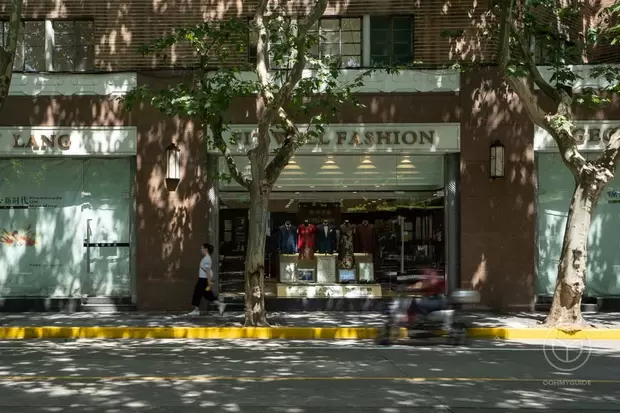
Maoming Road
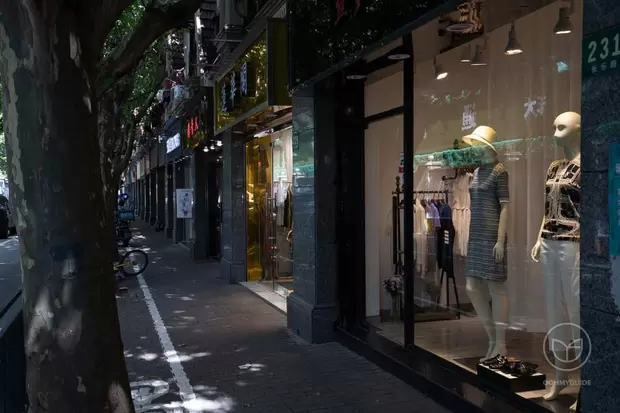
Xinle Road
Explore Shanghai’s Specialized Retail Districts
The sheer scale of Shanghai is fully reflected in the complexity of its commercial geography. It is not only divided by prestige (and price), but also by specialization. Distinctive goods are associated with definite destinations, whether electronics (Metro City in Xujiahui), children's clothes (Pu'an Road), antiques (the Old City), or books, art supplies, and stationery (Fuzhou Road). Sometimes this specialization is clearly sign-posted, as in the case of the Laoximen Tea Market, the nearby Xizang Road Flower, Bird, Fish & Insect Market (mostly for insects and pets), or the Caojiadu Bird & Flower Market (mostly for flowers and plants). Beside these generally recognized zones, however, there are myriads of lesser shopping streets throughout the city specialized in goods ranging from work tools to paper towels. Even for Shanghai natives, discovering these areas will usually be a matter of chance.
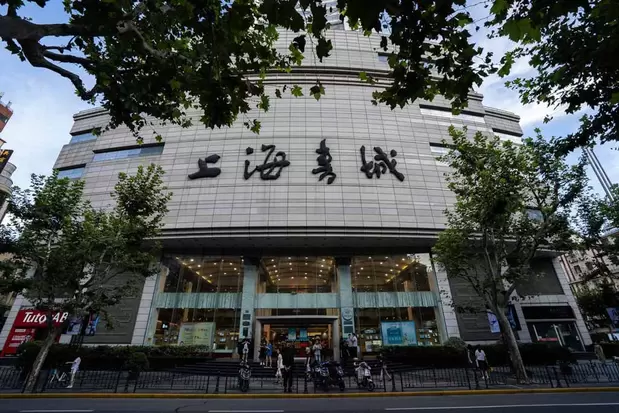
Shanghai Book Mall on Fuzhou Road
Bazaars Near Shanghai’s Top Tourist Attractions
There are areas of the city where tourism and shopping are brought together with unusual intensity. Shanghai's famed Xintiandi development is one such, nestling boutique curiosity and fashion outlets among its popular dining venues and bars. In the more recent Tianzifang 田子坊 development, to the west of Xintiandi and directly north of the Dapuqiao 打浦桥 metro station, the range of shopping options is wider, and prices a little lower, but with comparable boutique chic. For a more ethnic (and perhaps kitschy) flavor of tourist-oriented shopping, the northern area of the Old City, directly west of Yu Garden (Yuyuan) 豫园 is an unrivaled destination.
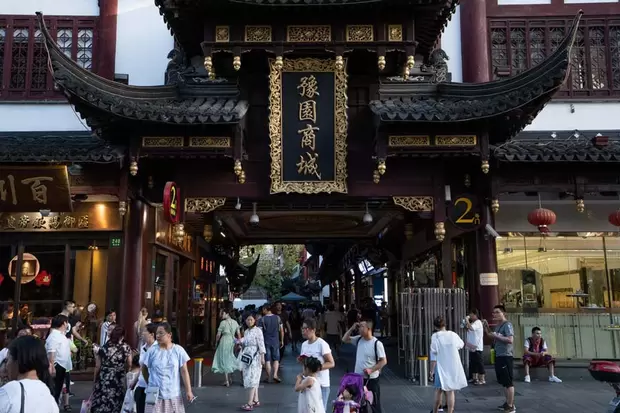
Yuyuan Bazaar
Shanghai’s Shopping Malls: Modern, Elegant, and Lively
The retail spaces most comparable to the great department stores of Old Shanghai are the city's major shopping malls. Whether clustered in hubs (such as Xujiahui) or strung along major thoroughfares (such as East and West Nanjing Road, Huaihai Road), they are scattered quite densely throughout the city, and one is rarely more than a few blocks away.
Despite their sparkling diversity, Shanghai's malls tend to share certain common patterns. All Shanghai's malls are multi-story, consisting of perhaps eight floors above ground, and two underground levels. Some degree of specialization typically differentiates these floors, with a mix of elevators and escalators connecting them, and an impressive central atrium – or several – linking them for spectacular visual observation. Often, a large, high-end supermarket will occupy the lowest basement level, and a cinema will occupy the highest floor. Extensive children's entertainment spaces are also a common feature, typically mixing toy and clothes stores, activity centers, games, exhibits, and amusements, with educational services and supplies on a single story. In the glitzier malls, especially, much of the shopping space appears to be dedicated to showrooms for branded goods, with product promotion and sheer presence evidently prioritized over on-site sales. Intense competition between malls, as also between malls and alternative shopping options, has driven them to diversify beyond concentrations of retail space into a variety of recreational attractions. Dining venues are an essential feature, often dominating at least one floor, and drawing appreciative crowds. Some of the city's best restaurants are found in malls. Among the malls that stand out for their scale or location are Lujiazui's huge Super Brand Mall and the Xintiandi Style retail complex. Only slightly less iconic are the hugely-successful iapm Mall on Middle Huaihai Road 淮海中路 (by South Shaanxi Road陕西南路), the deluxe ifc Mall in central Lujiazui – perhaps the most spectacular concentration of luxury brands in the city – and the KPF-designed Jing'an Kerry Center (opened in 2013).
Bargain and Buy: Expats’ One-Stop Shopping Spots in Shanghai
The other end of the Shanghai shopping world was occupied by its "gray" or "knock-off" markets, which could be rarely found in nowadays. These specialize in products that left the country's manufacturing operations for foreign-branded goods by the back door. While far less prevalent than in the early days of Reform and Opening, such markets can still be found, for instance in the S·C·Plaza Shopping Mall located underground next to the Science and Technology Museum in Pudong, or the Shanghai Hongqiao Silk & Pearl City, in the western Hongqiao suburbs. However, the emergence of those "gray goods" has been managed to lower down to minimum level by the government's strict surveillance in purpose of protecting intellectual property rights, don't expect too much on those "surprises", but you can still get cheap-while-good things worth dropping an amount.
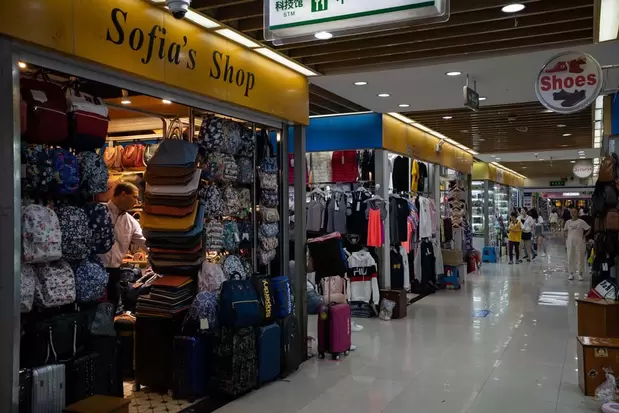
S·C·Plaza Shopping Mall
Swipe, Scan, Shop: The New Normal in China
Following the city's re-opening in the early 1990s, Shanghai advanced quickly to recover the prestige it had enjoyed in the early 20th century as one of the world's great metropolitan centers. Within a few years it had reburnished its global image, and become once again host to sparkling international luxury brands. Yet no sooner had Shanghai recovered its legendary commercial vitality than it was inundated by waves of drastic historical change. Among these, the most remarkable has been brought by the World Wide Web, and more specifically the Chinese Internet, accessed through mobile phones.
China has been transformed by the Internet as profoundly as any country on earth. Its development as a marketplace has been especially consequential. Over recent years, China has established the most mature mobile payments system in the world. Even trivial retail transactions are now settled conveniently on the spot, using digital cash stored on special online accounts. The exchange is sealed by simply uploading a QR code through the embedded camera of a mobile phone. Unfortunately for overseas visitors, integration of this new payments system with international banks has yet to seriously begin, so local support is required to take advantage of it. A complementary logistics revolution has also taken place. The most sophisticated elements of this stock-control and transportation infrastructure includes computer monitoring and reputation systems, and delivery drones. Its most visible aspect, however, relies on a revival of traditional services. Home delivery, most notably, is highly-developed, efficient, and inexpensive. The system depends upon motorcycle-based couriers (kuaidi快递), who make up a substantial part of the city's traffic, and can be seen at work everywhere. The food courier business Sherpas was a pioneer in the field.
The explosive growth of Internet shopping has changed the country. The number of small online traders has mushroomed, and the companies that host their exchanges – especially the mighty Taobao 淘宝 – have become some of the largest and most dynamic in the world. Many ordinary families, often with minimal previous business experience, have found new opportunities as online vendors, perhaps selling home-made food items, or acting as intermediaries for distant producers of clothes, pottery, or toys. Entire villages have dedicated their economies exclusively to servicing the new online marketplace, which connects them more directly than ever before to comparatively prosperous urban consumers.
For the city's established retailers, the explosion of online trade presents a disruptive threat. If Shanghai's malls – most obviously – have turned themselves ever more extravagantly into entertainment venues, it is because the city's homes have become such convenient shopping places. Shanghai's commercial cosmos is spreading into new dimensions. We haven't seen anything yet.
